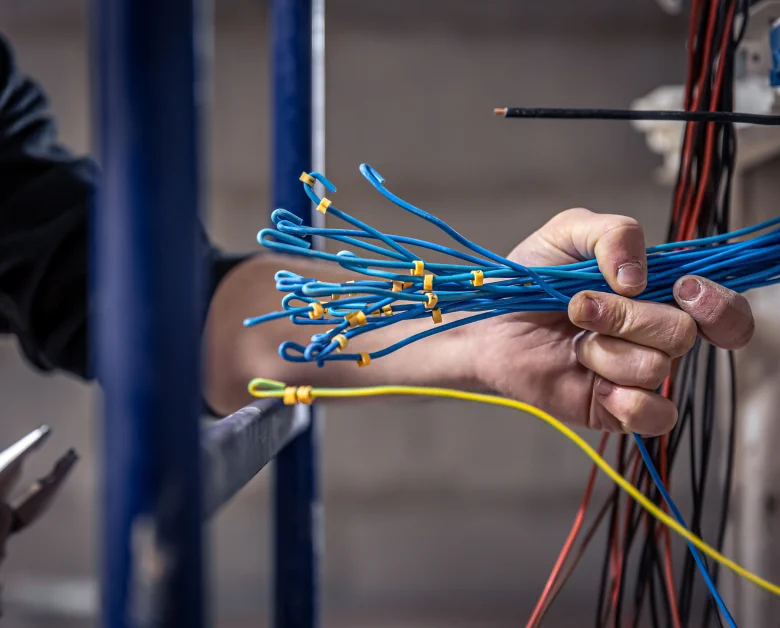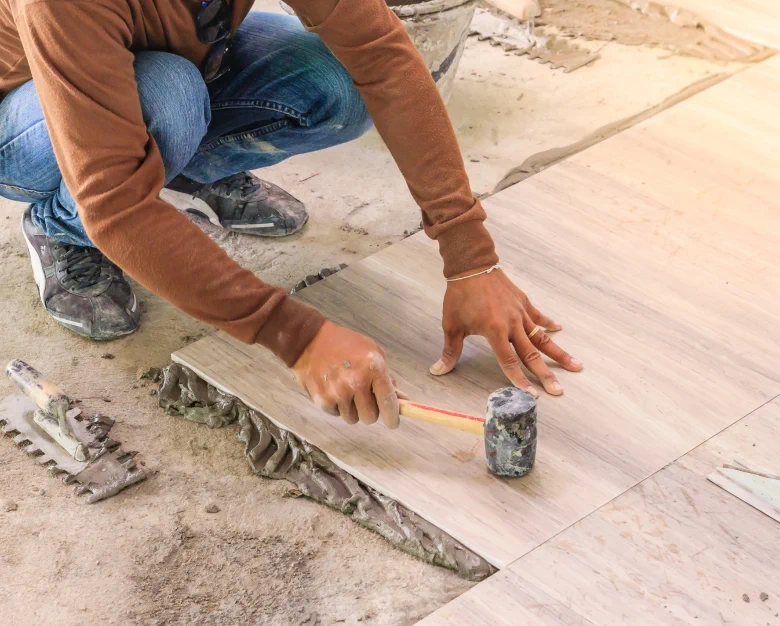Footings Installation
For many years we have been lowering basements in Greater Toronto Area to extend living space and get the full use of house.
Get a free estimate from Rock Basements and convert unused space to extra square footage or rental income.
Footings Installation

On average basement underpinning costs $75 - $80 per square foot with excavation and entire waterproofing process. - see breakdown
Let’s do the math: even if you spend $100 000 for underpinning and finishing, the rental income in Toronto covers expenses within 4 years and your house value difference doubles.

How Do We Work?
Based on Drawings
While excavating and extending the foundation wall, all deficiencies will be exposed and fixed. Even the issues that are not on plan have to be taken care of. Every job is approved by structural engineer and city inspector.
Complete Inspection
Do you think you can easily rent out basement without going through set of implemented corrections? Actually there is a legal obligation for owner to have minimum height requirement for renters in Toronto and basement underpinning can help achieve that.
Order Materials
You need a lot of money to buy second property as an investment and rear additions just cost too much. Underpinning becomes the ultimate solution to increase livable square footage and potentially have an extra income by renting that part of home.
Strip Footings
Entire process of lowering the basement includes waterproofing all exterior walls in house with installation of damp proofing items such as sump pump and back water valve. This insures many years of leak free basement walls and you can finish the renovation inside.
Typical Issues
When Installatin Footings
1. Bad Excavation: Existing drain pipes are taken out during excavation and new ones placed under concrete slab. Injector pump may be needed.
2. Wrong Depth: We put weeping tile system and the bottom of new footings and install delta membrane on exterior walls to protect from water.
3. Incorrect Size: All collected water is automatically thrown out by sump pump. It prevents basement from dampness.
4. Forgetting Key: This system protects drain pipes from sewer back up. It shuts down in case water starts flowing backwards.
5. Reinforecement: Typically structural changes are assumed with future construction of the house. Beams and steels posts are installed.

How to Install Footings?
Excavate/Clean
Basement underpinning is considered to be a major structural change to a house and permit is required all such work.
Architect needs to create a drawing with structural engineer stamp before submitting it to city for approval.
Rock Basements can assists in acquiring all necessary documents to start work.
Inspect
After each section is dugout, city inspection needs to be requested.
Inspector checks depth, length and thickness of form before concrete is poured in place with all necessary support.
Nowadays inspectors require confirmation letter from structural engineer for ongoing sections. Expect 3-4 engineering reports and inspections.
Measure
This step may be skipped in homes that have completely unfinished basement spaces.
Otherwise homeowners or general contractors are responsible for demolishing and emptying the space to start basement lowering.
Our project manager can separately quote demolition part of work with disposal of debris from jobsite.
Pour
When all walls are completely underpinned and new height of basement is established, its time to excavate the middle part.
Sometimes by hand with soil belt and sometimes by small bobcat the soil is removed.
Average 800 sq ft basement takes 6-8 full days to excavate the middle. Anywhere from 50 to 85 tons of soil is excavated and taken out by dump truck.
Form
As you may already know, underpinning of foundation walls with footing is performed in sections.
Typically it's 3 to 4 sections. Each is somewhere between 2 and 3 feet of wall.
They are dug out and concrete is poured separately, so the house has enough of structural stability during basement lowering.
Strip
Old drain pipes are placed within a foot or two from old concrete slab.
Lowering basement floor by several feet automatically means old pipes have to be removed and replaced.
We also check the slope and stability of drain pipe going towards city. That pipe is often damaged and needs replacement.
Additional Work We Provide
May not be included in quote
1. Foundation: It makes sense to install heated floor system during underpinning before new concrete is poured.
2. Waterproofing: Semi finished basements require demolition of walls and floor before excavation and concrete work begins.
3. Excavation: Although we can order material for you, architects and engineers need to spec each structural beam/post.
4. Rebar Installation: We do make basement walkouts, but it is priced separately by architectural drawings (permit required).
5. Inspection/Confirmation: New basement can be designed with larger windows for legal rent purposes or yourself to enjoy more natural light.

When are New Footings Needed?
 New Home
New Home
The idea of converting useless basement space into rental unit in Toronto is just mind blowing.
Just imagine getting extra $2000 on average to cover mortgage and other bills.
If your house is being rented already and you add extra unit in the basement that is even more convenient.
Don’t forget to do all necessary paperwork for registering legal unit with city.
 Addition
Addition
With Underpinning your basement its possible to get those necessary extra 1 or 2 bedrooms for the house.
We understand that many families in Toronto grow with time and putting kids in one room is not the greatest idea.
Want to reunite with parents and transform one house to comfortably fit everyone?
Lowering basement is the cheapest and fastest way to get extra bedroom into a house.
 Walkout
Walkout
Most of homes in Greater Toronto Area have kitchen and dining area on the main floor, while 2nd floor is dedicated to bedrooms.
Entertainment part of life is definitely missing here, but we can make it happen for you in the basement space.
After lowering the house and converting space to livable there are plenty of options.
It can be a TV set up with game consoles, bar area or even home theater.



Hire Rock Basements
for New Footings
Inhouse till the end
The whole meaning of underpinning basement in Toronto is to increase overall height and make the space livable.
We never see request from homeowners to lower basement when existing height is already more than 7 feet.
Adding extra square footage and living space on top of home or at the back is way more expensive that digging down with extension of foundation walls.
If you don’t desire to move but desperate for increasing living space in your home, than underpinning is the smartest way.
Experience
If you live in a house without using basement space and want to invest into rental property than you don’t have to look any further.
Lowering basement and converting it into legal rental unit is the best possible investment in Toronto.
Still don’t believe? Lets compare!
The cheapest property on the market that can bring around $2000 per month costs more than half a million.
With basement underpinning its achievable by spending a quarter or a fifth of that amount without committing to new mortgage.
Best Rates
There are only two ways to present your property to a market while selling with an agent.
First option is obviously to sell as is. Investors and remodeling companies typically lowball those for a chance to scoop it up and make money in the process.
The second way (Recommended) is to upgrade the property before selling, making it more attractive for buyers.
What could be better than fixing foundation issues and increasing the living space before selling it. Refinancing existing home for such project is a great way to reinvest before selling.
Great Timing
Typically couples buy home with idea to fit their current or non distant future plans.
Everyone gets a bedroom with own or shared bathroom for use from hallway area.
Years or decades down the road the family may expand or parents may be reunited into same residence. For that you will need extra space.
Excavating and enlarging living space in basement is the greatest way to make extra bedrooms and bathrooms for your family.
With underpinning of home we can even create a floor plan for future renovation with finishes.
Frequently Asked Questions
Lets just start with what we consider an average underpinning project and it’s size. In Toronto older home basements are typically around 800 sq ft and owners want to extend foundation wall by 2.5 feet.
From day 1 construction and no extra work we expect to finish it within 5 weeks. It is not really weather dependent, but city inspectors are sometimes late to respond, which drags timelines.
We assume to finish underpinning and excavating all sections within first 3 weeks, assume 1 week for all inspections or reports and have the last week for waterproofing, installation of drains and finishing concrete.
Additional work such as initial demolition, basement walkouts and outside drain work would extend our timelines.
All problems come from assumptions or not thinking through the future use of basement after it is underpinned. It is not the job of an architect or engineer to guide you through all possible outcomes – They just draw structural details.
Here is a list of common problems:
- Sizes of existing exterior walls and footings are guessed
- Main sewer drain is higher than proposed basement slab
- Future renovation floor plan
- Exact size and position of beams and posts
- Waterbed level
Completing drawings and work under one company automatically eliminates most of these issues.
We always talk about completion time or cost for average project, but each project has to be priced separately. Site specific drawing provided by an architect and details calculated by structural engineer.
First of all we are looking at accessibility. Driveway and ability to put a bin with soil belt is a basic requirement for underpinning project to be considered average. Otherwise most of excavation and carry out soil has to be done by hand, which drastically increases the cost.
Secondly Rock Basements needs to consider the size of project. Typically the larger it is, the cheaper it comes down to per square footage of space or per linear foot of foundation wall.
And the last detail we look at is the complexity of work and all the specs. It includes depth of excavation, thickness of new foundation and footings, additional specs for type of concrete pour method and reinforcement.
Committee of adjustments is used to overcome construction limits established by local regulations or bylaws.
If your project includes increase of home footprint, overall roof pitch height, total square footage above ground, set backs or addition of new legal units – you may need to go through committee if the plan is to go above suggested limit.
Basement underpinning in Toronto does not follow under those limitations and does not require committee of adjustments. For that reason, entire home remodeling project may be separated into two different permits. That allows you to finish basement underpinning while proposal is under review for rest of the project.
Eventually you will get a permit for underpinning basement. It can take longer or may need several revisions if city is not quite sure what you are planning to do in certain situations within and outside of the house.
Normally when there is a deficiency or lack of information from an architect or structural engineer on proposed drawings, city department would request clarification or additional information.



